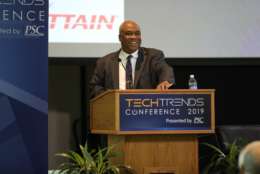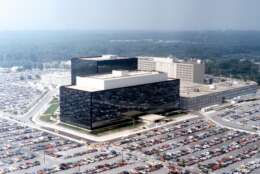Automation
-
Blockchain in recent years generated plenty of hype in the federal contracting community, but technology never resulted in many agencies moving forward with the technology.
December 02, 2020 -
GSA is launching a Digital Worker Credentialing Handbook to help bridge the gaps between IT and information security when agencies field unattended bots.
December 01, 2020 -
Telematics will evolve from being a “dot on a map” tracking solution to a digital automation platform that ultimately guides an effective and fast decision-making process.
November 27, 2020 -
The strategy, which is about 80% complete, will describe between nine and 11 distinct lines of effort to connect the military's sensors and 'shooters' into a cohesive network.
November 23, 2020 -
The API case at VA illustrates how AI can make employees’ jobs easier, rather than render those employees obsolete - common fear of organizations and managers wary of implementing AI in their offices.
November 19, 2020 -
Predictive analytics can help detect internal and external failures.
November 18, 2020 -
The combatant command is trying to bring in more data to make a workable grid for the new command and control platform.
November 11, 2020 -
Being prepared for the next conflict is a guessing game for the military. They make preparations but those are rarely ever enough. What really counts is their ability to adapt.
November 10, 2020 -
Damien Eversmann, staff solutions architect at Red Hat, said many companies are now looking at automation as a way to fill in holes in their continuity of operations plans.
November 10, 2020 -
This week on Federal Tech Talk, Arash Rahnama, head of Applied AI Research at Modzy, joins host John Gilroy to talk about artificial intelligence, data security, data filtering, and federal IT.
November 09, 2020 -
Sid Nair of Teletrac Navman says fleet and mobile asset managers can use telematics as a digital automation platform for effective and fast decision-making.
November 04, 2020 -
Jeff Kleck, the director of the cyber portfolio for the Defense Innovation Unit at the Defense Department, said the organization and the Air Force are testing out three software tools using advanced technologies to sort through cyber threats.
October 30, 2020 -
Kevin Kerr, the Energy Department’s Oak Ridge National Laboratory CISO, said his team had to reestablish employee habits baselines and then alter security protections to account for different hours people worked since the pandemic emergency started.
October 21, 2020 -
The use of robotics process automation, natural language processing and other emerging technologies are gaining momentum in the federal acquisition community to speed up the entire process.
October 12, 2020 -
Many agencies have turned to commercial multifactor authentication solutions as an alternative to PIV cards with a huge chunk of the federal workforce still working remotely. But some of those solutions are more secure than others.
October 09, 2020
















